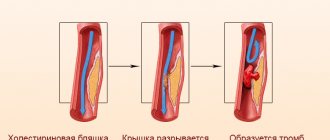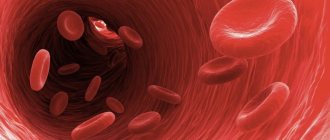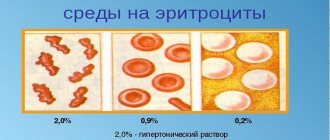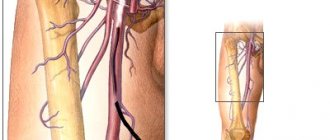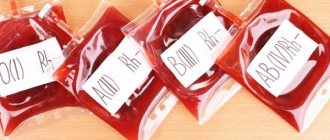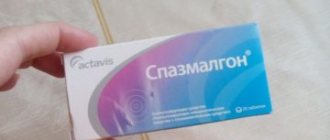Release form and composition
Dosage forms of the drug:
- Solution for intravenous (IV) and subcutaneous (SC) administration: light yellow or colorless transparent liquid (bottle (bottle) 1 ml, 5 or 10 pcs. in blister or plastic (pallets) packaging, in a cardboard box 1 or 2 packages; 5 or 10 pieces in a cardboard pack without packaging. 1 ml ampoule with an ampoule knife, 5 or 10 pieces in a contour cell or plastic (pallets) package, in a cardboard pack 1 or 2 packages; 5 or 10 pcs in a cardboard pack without packaging. 2 ml ampoule with an ampoule knife, 5 pcs in a blister pack, 1 or 2 packs in a cardboard pack. 5 ml ampoule with an ampoule knife, 5 or 10 pcs in a blister pack or plastic (pallets) packaging, in a cardboard pack 1 or 2 packs. Ampoule 5 ml with ampoule knife, 5 or 10 pcs. in a cardboard pack. Ampoule 5 ml, 5 or 10 pcs. in a cardboard pack. Bottle (bottle) 5 ml, 5 or 10 pcs. in blister or plastic packaging (pallets), in a cardboard pack 1 or 2 packages. Bottle (bottle) 5 ml, 1, 5 or 10 pcs. in a cardboard pack. Polymer ampoule 5 ml, 5 pcs. in a cardboard pack. Bottle (bottle) 5 ml, 5 pcs. in a polystyrene container);
- Ointment for external use (10 or 25 g in aluminum tubes, 1 tube in a cardboard box);
- Gel for external use (15, 20, 30, 50 or 100 g in aluminum tubes, 1 tube in a cardboard pack).
Active ingredient: sodium heparin:
- 1 ml of solution – 5000 IU;
- 1 g ointment – 100 IU;
- 1 g of gel – 1000 IU.
Auxiliary components:
- Solution: sodium chloride – 3.4 mg, benzyl alcohol – 9 mg, water for injection up to 1 ml;
- Ointment: benzocaine – 40 mg, benzyl nicotinate – 0.8 mg.
Preparatory stage
Before performing an injection, it is important to follow the rules of asepsis and antisepsis. Everything you need for injections should be at hand:
- disposable gloves, cotton wool, alcohol-containing solution;
- disposable syringe with a thin needle;
- the administered medication and, if necessary, the ingredients for preparing the solution.
Using two swabs soaked in alcohol, treat the area where you plan to inject the injection into the stomach. First, the entire intended area for injection is prepared, then using the point method, the needle insertion site is prepared.
What is needed for injections
When administering a medicinal solution, you must strictly follow the dosage, each time using a new syringe and a fresh portion of the drug. It is advisable to eliminate the need to transfer the syringe from one hand to the other (to avoid compromising the sterility of the needle).
When prescribing several injections, the injection sites should be located at a distance of at least 3 cm from each other to prevent bruising and infiltrates.
Indications for use
- Therapy and prevention: thrombophlebitis, pulmonary embolism (including in the case of peripheral vein diseases), deep vein thrombosis, coronary artery thrombosis, unstable angina, acute myocardial infarction, atrial fibrillation (including accompanied by embolism), syndrome disseminated intravascular coagulation (DIC), microcirculation disorders and microthrombosis, renal vein thrombosis, hemolyticouremic syndrome, bacterial endocarditis, glomerulonephritis, lupus nephritis;
- Prevention: blood clotting during operations that use extracorporeal blood circulation methods, mitral heart disease, hemodialysis, peritoneal dialysis, hemosorption, forced diuresis, cytapheresis;
- Flushing venous catheters;
- Preparation of non-clotting blood samples for laboratory purposes and blood transfusions.
Contraindications
Contraindications to the use of Heparin in solution form:
- History or current heparin-induced thrombocytopenia, with or without thrombosis;
- Pregnancy and breastfeeding period;
- Bleeding, if the potential risk outweighs the intended benefit of use.
The solution is prescribed with caution for pathological conditions associated with an increased risk of bleeding:
- Traumatic brain injury, hemorrhagic stroke;
- Malignant neoplasms;
- Cardiovascular system: cerebral aneurysm, acute and subacute infective endocarditis, severe uncontrolled arterial hypertension, aortic dissection;
- Organs of the lymphatic system and hematopoiesis: hemorrhagic diathesis, leukemia, hemophilia, thrombocytopenia;
- Ulcerative colitis, erosive and ulcerative lesions of the gastrointestinal tract (GIT), varicose veins of the esophagus, prolonged use of gastric and small intestinal drainage, hemorrhoids;
- Congenital deficiency of antithrombin III synthesis and replacement therapy with antithrombin III drugs (small doses of the drug should be used to reduce the risk of bleeding).
Other physiological conditions and pathologies in which Heparin solution should be used with caution: chronic renal failure; severe liver diseases with impaired protein-synthetic function; vasculitis; proliferative diabetic retinopathy; recent surgical interventions on the spinal cord, brain, eyes; early postpartum period; recent epidural anesthesia or lumbar puncture; threatened abortion; period of menstruation.
Under close medical supervision, it is recommended to use the solution when treating children under 3 years of age and patients over 60 years of age, especially women.
Contraindications to the use of ointment and gel:
- Diseases accompanied by impaired blood coagulation processes, bleeding, cerebral aneurysm, suspected intracranial hemorrhage, hemorrhagic stroke, dissecting aortic aneurysm, malignant arterial hypertension, subacute bacterial endocarditis, antiphospholipid syndrome;
- Erosive and ulcerative lesions of the gastrointestinal tract, malignant neoplasms in the liver, severe damage to the liver parenchyma, cirrhosis of the liver with varicose veins of the esophagus, shock conditions;
- The recovery period after surgery on the liver and bile ducts, brain, eyes, prostate gland, spinal cord puncture;
- Recent childbirth, menstruation, threatened miscarriage.
Ointment and gel should not be applied to ulcerative-necrotic processes, to mucous membranes or open wounds.
Application of ointment or gel during pregnancy and during breastfeeding (lactation) is possible under close medical supervision, only under strict indications.
The use of all dosage forms of Heparin is contraindicated in patients with hypersensitivity to the components of the drug.
Heparin injections in the stomach: what they are used for, instructions for use, composition, analogues
In this publication, we will talk about the purpose of Heparin injections in the stomach, what the drug is needed for, and what contraindications it has. You will learn about the possibility of giving injections to pregnant women and nursing mothers. The article also contains a list of drugs similar to Heparin that have the same therapeutic effect.
Description of dosage form and composition
The direct-acting anticoagulant for injection comes in a ready-made liquid form. The solution can be colorless and transparent, or with a slight yellowish tint. The specific smell of the drug is weak, it is practically not noticeable. The product is completely ready for use.
The drug is not produced in pill form. "Heparin", in addition to a liquid substance for injections, can be bought in the form of an ointment or gel (Akrikhin 1000).
We are interested in Heparin injections, so we will consider the composition only for the solution:
- heparin is the basis of the drug at a dosage of 5000 IU per 1 ml;
- water for injections;
- sodium chloride;
- benzyl alcohol.
One package contains five ampoules with a capacity of 5 ml.
Watch this video on
Pharmacological properties and pharmacokinetics
The medicine is used to increase the fibrinolytic activity of the blood. An anticoagulant is used to liquefy it, as it reduces its coagulability, fibrin begins to form more slowly. Even a small dose of Heparin can significantly reduce blood density, and a high concentration of the drug reduces thrombin activity.
The main substance is able to accumulate in the blood, and due to this property, the aggregation of platelets, erythrocytes and leukocytes is reduced, and adhesion is reduced.
The medicine has a beneficial effect on preventing the development of atherosclerosis. "Heparin" has a slight vasodilator and anti-allergenic property. This effect is determined by the ability of the substance to reduce the activity of the complement system by binding its elements.
It is preferable to give an injection in the stomach, since the effect of the medicine will last longer than with other types of injection, but the effect does not occur as quickly.
We suggest comparing the terms of impact and action:
- injection into a vein - the effect begins almost instantly, the effect lasts no more than 4-5 hours;
- intramuscular injection - the effect begins after 15-25 minutes, the effect lasts for six hours (with this injection, bruises often form at the injection site, so the method is not recommended);
- subcutaneously - the effect is in an hour, but the duration of action is up to 8 hours.
Metabolism is carried out by the liver, and excretion is carried out by the kidneys. The medicine does not penetrate through the placenta or into breast milk.
Only a doctor prescribes the drug, he also prescribes the dosage and number of injections, based on the patient’s condition and the reason why the injections were needed (treatment or prevention).
Why are Heparin injections given in the stomach?
Procedures are prescribed for patients with blood clotting problems.
Subcutaneous injections can be used for the following ailments:
- atrial fibrillation;
- thrombosis;
- heart attack;
- thromboembolism of the pulmonary artery;
- unstable angina;
- violation of blood microcirculation;
- prevention of blood clots;
- endocarditis.
Indications for the use of Heparin are before operations and blood transfusions to reduce blood clotting.
Despite the high cost of the product, you cannot refuse it if you have a doctor’s prescription. This drug reduces the risk of sudden death in patients with heart defects and thrombosis. After a heart attack, Heparin can be prescribed to prevent a recurrent attack.
This product has saved millions of lives, reducing the number of deaths.
Instructions for use of the drug
The package with the drug contains instructions for use, which clearly indicate dosage options. But you cannot be guided only by the annotation; the dose and number of injections per day, as well as the duration of the course, must be selected by the attending physician.
Each person is unique, as is their disease, so an individual approach is required.
The doctor will assess the patient’s health status, the reason for the injections (treatment, prevention), and determine the appropriate dose.
The amount of medication used is also affected by the test results; it is especially important to evaluate the aPTT.
We suggest considering an approximate (universal) treatment regimen for adults:
- For therapy purposes, injections are used in the stomach 4 times a day for 10 days. One dose is 10,000 IU, which is equal to 2 ml of the drug.
- If we are talking about blood transfusion, then the donor is administered from 7.5 to 10,000 IU once (only if intravenous injection is not possible).
- For prevention purposes - 5000 IU (that is, 1 ml) once or twice a day. This will be prescribed by the doctor, who will also determine the duration of the course.
This drug is prescribed to children extremely rarely, and injections are carried out only in the hospital. The dose for pediatric patients is selected very carefully, since the presence of benzyl alcohol in the composition can cause intoxication of the body.
Special instructions:
- Heparin in ampoules can change color from transparent and colorless to bright yellow. This does not affect the effectiveness and tolerability of the drug at all.
- A biopsy is not performed during treatment with Heparin.
- You cannot give other injections (except intramuscular) during the course of the described medication.
- The use of the medicine during alcohol intoxication is possible, as well as during smoking.
- "Heparin" does not affect attention and reaction severity, so driving vehicles and performing hazardous work is possible.
Injecting medication into the stomach is not as easy as it seems. You need to pull the abdominal fold forward as much as possible, hold it between your fingers, and insert the needle deeply.
Change injection sites regularly to avoid hematoma at the injection site.
During pregnancy and lactation
The active components and excipients cannot harm the fetus in any way, since they do not have the ability to penetrate the walls of the placenta. Despite this, the use of Heparin is not recommended for pregnant women. The fact is that the blood-thinning effect threatens the expectant mother with premature birth in the later stages or miscarriage in the early stages.
Despite the high risk of such complications (up to 21% versus 4% in the absence of injections), treatment can be prescribed if there are absolute indications during pregnancy. After all, the risk of sad consequences for mother and fetus is much higher due to dangerous diseases (including blood clots) than from the use of Heparin.
In this case, injections are given, but only in a hospital under the constant supervision of a doctor.
Heparin does not pass into breast milk, so the drug is not transferred to the baby from the mother.
But, as numerous studies have shown, the use of Heparin in the form of injections for women in most cases led to osteoporosis and some spinal injuries in children. Therefore, injections are not prescribed during breastfeeding.
If there are indications, and it is impossible to do without Heparin, then breastfeeding is canceled, transferring the baby to artificial formula until the end of the course.
Drug interactions
Heparin is not contraindicated for use with other medications, but there are some drugs that can enhance or reduce its effectiveness.
Enhance the effectiveness of Heparin:
- medications that stop the production of vitamin K; aspirin;
- drugs that reduce platelet aggregation;
- indirect anticoagulants.
Weaken the effectiveness of Heparin:
- phenothiazines;
- nicotine and nicotinic acid;
- ethacrynic acid;
- thyroxine;
- nitroglycerine;
- cardiac glycosides;
- tetracyclines;
- protamine;
- polypeptides.
Heparin cannot be mixed with other medications in one syringe to give a single injection.
Contraindications, side effects and overdose
The drug is not prescribed for intolerance to the components or any kind of bleeding. The exception is hemoptysis with pulmonary infarction and hematuria with renal infarction.
Other contraindications:
- cardiac aneurysm;
- endocarditis caused by bacteria;
- gangrene of veins;
- increased permeability of blood vessels;
- dysfunction of the liver, kidneys;
- anemia;
- leukemia;
- recent operations;
- age up to two years;
- varicose veins of the esophagus;
- menses;
- stomach and intestinal ulcers;
- open wounds.
Use the product carefully:
- elderly patients (over 65 years old);
- people with polyvalent allergies;
- with arterial hypertension;
- patients with diabetes;
- persons with active tuberculosis;
- with ICH.
Side effects may include:
- The most common include allergies (rhinitis, itching, rash, anaphylactic shock), headache, and nausea. Less commonly - diarrhea or vomiting, lack of appetite.
- Less commonly, thrombocytopenia, necrosis of the epidermis.
- Very rare and only with long-term treatment: osteoporosis, bone fragility, bleeding and hemorrhage.
- The following phenomena are considered normal side effects: pain and burning in the injection area, hematomas, bleeding from the injection site.
As for an overdose, it is quite possible. Manifested by bleeding and hemorrhage. If the overdose is small, then you need to temporarily stop taking Heparin; the symptoms will go away on their own. When the bleeding is severe, you need to use protamine sulfate (1 mg for every 100 IU of Heparin administered).
Analogues of injections
In some situations, the doctor may prescribe not Heparin, but its analogues.
The following drugs are similar in composition and have the same therapeutic effect:
- "Heparin Sodium Brown";
- "Troparin";
- "Enixum";
- "Fraxiparin";
- "Cibor".
According to reviews, the effect of treatment with analogues is the same as that of Heparin.
Although injections can be given at home, it is recommended that they be performed in the presence of a doctor. Heparin has many side effects and contraindications, so under no circumstances use it for longer than the specified period or in large dosages.
Source
Source: https://prikol.is/ukoly-geparina-v-zhivot-dlya-chego-delayut-instruktsiya-po-primeneniyu-sostav-analogi/
Directions for use and dosage
The solution is administered intravenously by drip or bolus and subcutaneously into the abdominal area. Do not administer the drug intramuscularly! The dosage is prescribed by the doctor based on clinical indications and taking into account the patient’s age. Typically, treatment begins with intravenous administration of 5000 IU, then switches to subcutaneous injections or intravenous drips.
Maintenance dosing depending on the method of application of the solution:
- Continuous intravenous infusion – 24000-48000 IU per day at a rate of 1000-2000 IU per hour;
- Regular intravenous injections – 5000-10000 IU with an interval of 4-6 hours;
- Subcutaneous injections - 15,000-20,000 IU 2 times or 8,000-10,000 IU - 3 times a day.
For infusion administration, the drug is diluted with 0.9% sodium chloride solution. Each subsequent dose is adjusted based on regular studies of activated partial thromboplastin time (aPTT) and/or blood clotting time. With subcutaneous administration of 10,000-15,000 IU per day, regular monitoring of aPTT is not necessary.
The treatment period depends on the route of administration and indications. The drug is used intravenously for 7-10 days, then treatment should be continued with oral anticoagulants. Oral anticoagulants are recommended to be prescribed from the first or from 5 to 7 days of treatment; discontinuation of the solution is prescribed on the 4-5 day of combined treatment.
The use of Heparin in special clinical situations is carried out according to a special scheme.
Ointment and gel are used depending on the clinical indications and age of the patient.
Why are Heparin injections given in the stomach?
Insufficient fluid intake into the body, kidney disorders, diabetes mellitus, diseases accompanied by dehydration and many other factors often lead to such a pathological condition in humans as increased blood clotting. Treatment in this case is carried out with the help of anticoagulants, a prominent example of which is the drug Heparin. In the article we will look at why Heparin injections into the stomach and what are the features of such therapy.
Description of the medicine
The main effect of Heparin injections is to prevent pathological blood clotting by directly affecting the enzyme antithrombin III.
Once the product enters the body, platelet synthesis is significantly reduced, which allows maintaining normal blood condition.
The anticoagulant is widely used in medical practice both as a prophylactic drug and for the full treatment of many diseases.
Indications for use:
- vascular complications after surgery;
- reduction of blood viscosity in devices intended for artificial blood supply;
- getting rid of blood clots formed during heart surgery;
- treatment of diseases that provoke a decrease in blood microcirculation throughout the body;
- as a prophylactic agent among patients prone to blood clots;
- therapy for myocardial infarction;
- treatment of deep vein thrombosis;
- increased D-dimer levels during pregnancy;
- atrial fibrillation and some other pathologies.
Heparin is used as a stand-alone drug or in combination with medications of other groups, for example, Fibrinolysin, Streptodecase and others.
The dosage is selected by the leading physician on an individual basis. The specialist takes into account test results, medical history, features of the course of the disease and some other characteristics of the patient.
Who is indicated for Heparin injections into the abdomen?
Heparin is classified as a direct anticoagulant. This substance is included in various medications, including ointments, tablets, and injections. Heparin is administered into the abdomen by injection; indications for use include:
- acute coronary syndrome due to myocardial infarction;
- thromboembolism affecting the vessels of the eyes, respiratory system and brain;
- atrial fibrillation causing embolism;
- for the prevention of pulmonary embolism in the period after surgery;
- blood transfusion from donor to patient;
- unstable forms of angina;
- heart defects;
- rheumatism;
- jades;
- asthma.
Heparin is used to reduce blood viscosity
Heparin injections reduce the negative manifestations of the described diseases, and in some cases, such treatment allows you to completely get rid of the pathology.
Action of injections
To understand why Heparin is injected, let’s find out what the main pharmacological features of this substance are. In a healthy person, heparin, together with fibrinolysin, is part of the body's natural anticoagulant system.
The substance prevents the formation of platelets, reduces their adhesion, and catalyzes the process of dissolving blood clots.
Thanks to this, renal and coronary blood flow significantly improves, which makes it possible to use the medicine for many cardiovascular diseases.
Important! Use of the drug among patients with reduced blood clotting may lead to bleeding and other dangerous consequences.
How long does it take to work?
Similar article:Instructions for Heparin tablets
After entering the body, the effect of Heparin begins quite quickly, but the effect is relatively short-lived.
When administered intravenously, the effect occurs almost immediately and is observed for 4–5 hours. After intramuscular injection, the effect occurs within half an hour, its duration is 6 hours.
If Heparin is used subcutaneously, inhibition of blood clotting is observed after 60 minutes and lasts from 6 to 12 hours.
The first option is used primarily for the treatment of life-threatening conditions in humans, such as thrombosis, embolism, myocardial infarction and other severe pathologies. Subcutaneous and intramuscular injections are used in medical practice for long courses aimed at the prevention and treatment of diseases characterized by increased blood viscosity.
Contraindications
The administration of Heparin injections into the abdomen is strictly contraindicated in some situations. Direct contraindications include:
- allergy to the main active ingredient of the drug;
- a blood disorder characterized by a low platelet count;
- severe pancreatic dysfunction;
- internal or external bleeding;
- arterial hypertension;
- serious pathologies of the liver and kidneys;
- alcoholism;
- threat of miscarriage.
During therapy, it is necessary to take into account the contraindications of the drug. It is prohibited to inject the drug in case of leukemia, anemia, aortic aneurysm, subacute endocarditis of bacterial origin, peptic ulcer of the stomach and intestines, after spinal cord puncture.
Why is the drug injected into the abdominal area?
Many patients are interested in why Heparin needs to be injected specifically into the abdominal area? The fact is that it is in this area that it is most convenient for the patient to inject himself, since injections are often carried out independently at home. In addition, placing an injection into the anterolateral wall does not cause severe pain.
It is recommended to give the injection using a special insulin syringe, which has a very thin needle.
Features of the procedure
How to give injections yourself? The technique for administering Heparin into the abdomen by injection is quite simple. To do this, the patient must perform the following actions:
- Wash your hands thoroughly with soap and wear sterile gloves.
- Prepare an ampoule with medicine, a syringe, cotton wool, and a disinfectant.
- Open the ampoule and draw the drug into the syringe.
- Wipe the skin with cotton wool or a bandage soaked in an alcohol solution or any other disinfectant.
- At a distance of 4 cm from the navel, pinch a fold of skin and insert a needle into it. The injection should be given slowly, listening to your feelings.
- After administering the medicine, you need to pull out the needle and apply a cotton swab with a disinfectant solution to the injection site.
The injection should be given in strict accordance with the instructions. Important! If the patient is giving an injection for the first time, it is advisable to do it under the supervision of a medical professional.
Use during pregnancy
Many women are diagnosed with pathological changes in blood composition during pregnancy. According to clinical studies, it turned out that despite the fact that the medicine may cause some side effects, the benefits of its use are still higher than the expected risks.
It should be noted that during pregnancy the instructions for use of the drug and the recommendations of the attending physician must be strictly followed. If the usual dose of medication for an adult patient is 5 thousand units. per day, for a pregnant woman the daily norm is determined depending on the patient’s weight and other characteristics of the body.
During therapy, it is advisable to use calcium supplements, since Heparin disrupts the distribution of this substance in the body.
The medicine is not able to penetrate the placenta, so pregnant women should not fear for the health of the fetus.
Side effects
Like many other medications, Heparin sometimes leads to side effects. These include the following conditions:
- changes in taste and loss of appetite;
- diarrhea;
- allergic manifestations in the form of urticaria, itching, irritability of the dermis;
- bronchospasms are rarely diagnosed;
- hematomas and bleeding at injection sites;
- pathological decrease in platelet concentration in the blood.
With long-term treatment with the drug in question, cases of the development of osteoporosis and spontaneous fractures against its background have been recorded.
To prevent the conditions described above, you should refrain from self-medication and use the medicine only as prescribed by a specialist. This will help achieve an optimal therapeutic effect and avoid complications.
Source: https://icvtormet.ru/medicamenty/zachem-delayut-ukoly-geparina-zhivot
Side effects
- From the blood coagulation system: thrombocytopenia in a transient and severe form, in rare cases with a fatal outcome, can cause the development of skin necrosis, arterial thrombosis, gangrene, stroke, myocardial infarction; hemorrhagic complications in the form of bleeding of the gastrointestinal tract or urinary tract, retroperitoneal hemorrhages in the ovaries, adrenal glands with the risk of developing acute adrenal insufficiency;
- From the gastrointestinal tract: nausea, vomiting, diarrhea, decreased appetite, increased levels of transaminases in the blood;
- From the musculoskeletal system: in case of long-term use - soft tissue calcification, osteoporosis and spontaneous fractures;
- Allergic reactions: urticaria, skin itching, skin hyperemia, bronchospasm, rhinitis, drug fever, anaphylactoid reactions, anaphylactic shock;
- Local reactions: pain, hematoma, bleeding, hyperemia or ulceration at the injection site;
- Other: inhibition of aldosterone synthesis, transient alopecia.
special instructions
Long-term treatment with large doses is recommended in a hospital setting.
The use of the solution should take into account blood clotting indicators; in case of a sharp decrease in the number of platelets, the use of the drug should be immediately discontinued.
If the drug is prescribed in high doses or in the absence of a response to Heparin, it is necessary to monitor the level of antithrombin III.
IM administration of other drugs while using the drug solution is not recommended.
In patients with arterial hypertension, treatment should be accompanied by regular monitoring of blood pressure.
The drug should be used with caution in patients undergoing radiation therapy, dental procedures, active tuberculosis, and in the presence of an intrauterine contraceptive device.
When treating women over 60 years of age, the use of sodium heparin may increase bleeding, so this category of patients should reduce the dose of the solution.
Adequate dosing, regular monitoring of blood clotting, and careful assessment of contraindications reduce the risk of bleeding.
Can there be consequences and complications?
In order to avoid unwanted side effects and complications, you must follow the basic rule - use the correct dosage. After each procedure, listen carefully to your body. All medications affect each person differently.
Complications that most often occur:
- allergies, urticaria, necrosis, runny nose;
- temperature;
- nausea, vomiting, upset stomach;
- headache;
- bleeding;
- osteoporosis;
- bronchial spasms;
- hematomas;
- hair loss, etc.
During the course of treatment, you should not drive a car, as treatment medications can cause dizziness.
Injection of a drug into the area of the anterior abdominal wall has been used in medicine for a long time. An injection in the stomach is preferable to other places for diseases of the blood vessels (varicose veins, atherosclerosis), heart (ischemia), and those associated with metabolism (diabetes). Injections in the abdomen are used during ART (assisted reproductive technologies) procedures. Their advantages:
- convenience (the patient can inject himself);
- the ability of subcutaneous fat to temporarily deposit (hold, store) a drug and distribute it throughout the body through the blood, lymphatic vessels and nerve endings located in it;
- insertion of a needle and medication into the anterolateral area does not cause pain.
Fears that after being bitten by a stray animal you will have to take the notorious 40 injections are unfounded. This prevention scheme is no longer used; only a few injections are performed at intervals, moreover, in the forearm.
Drug interactions
Heparin solution is compatible only with 0.9% sodium chloride solution.
Sodium heparin enhances the effect of drugs containing benzodiazepine derivatives, phenytoin, propranolol, quinidine.
The activity of the drug is reduced by tricyclic antidepressants, protamine sulfates, and polypeptides.
The anticoagulant effect of the drug is enhanced by the simultaneous use of thrombolytic agents (alteplase, urokinase, streptokinase), antiplatelet agents (acetylsalicylic acid, dipyridamole, clopidogrel, ticlopidine, prasugrel), indirect anticoagulants (warfarin, acenocoumarol, phenindione), non-steroidal anti-inflammatory drugs (NSAIDs).
The risk of bleeding is increased by the simultaneous use of Heparin with dextran, glucocorticosteroids, cytostatics, hydroxychloroquine, cefamandole, valproic and ethacrynic acid, propylthiouracil.
The anticoagulant effect of the drug is reduced by the simultaneous use of corticotropin, ascorbic acid, nitroglycerin, ergot alkaloids, quinine, nicotine, tetracycline, cardiac glycosides, antihistamines or thyroxine.
The drug may reduce the effect of glucocorticosteroids, adrenocorticotropic hormone, and insulin.



